“Dune: Part Two” Cinematographer Greig Fraser on Poisoning the Light of Giedi Prime
If you polled all the people who have now seen Denis Villeneuve’s Dune: Part Two in theaters about what was the most visually striking moment, my guess is it would be the Sandworm Express in a runaway. We’re talking, of course, about Paul Atreides (Timothée Chalamet) riding the universe’s most dangerous mode of transport—a colossal sandworm—across the dunes of Arrakis. And while that sequence is staggering in its audacity and surprising in its alchemical verisimilitude (it feels as if that’s precisely what it would be like to try and surf on a skyscraper-sized alien terrestrial annelid), for my money it’s the silky blackness conjured in a seemingly infinite hallway on the planet of Giedi Prime, home to the vampiric Harkonnen clan, the most aggressively unlikable of the Dune-verse’s many villains.
That scene finds a recently victorious Feyd-Rautha Harkonnen (Austin Butler) stalking a solemn figure in striking blue, Lady Margot (Léa Seydoux), through a darkness so rich you feel like you could ladle it on your vanilla ice cream. As Feyd makes his move (a threat rather than a come-on, although to him they’re one and the same), and Lady Margot makes her case (she’s a member of the Bene Gesserit, therefore making her case includes using a means of voice control that issues commands on a subconscious level), inky black fireworks explode over the planet in the background, “anti-fireworks,” as cinematographer Greig Fraser explained, created by an ingenious mix of video and lighting technology inspired by, as I’m sure you’ve guessed, jellyfish.
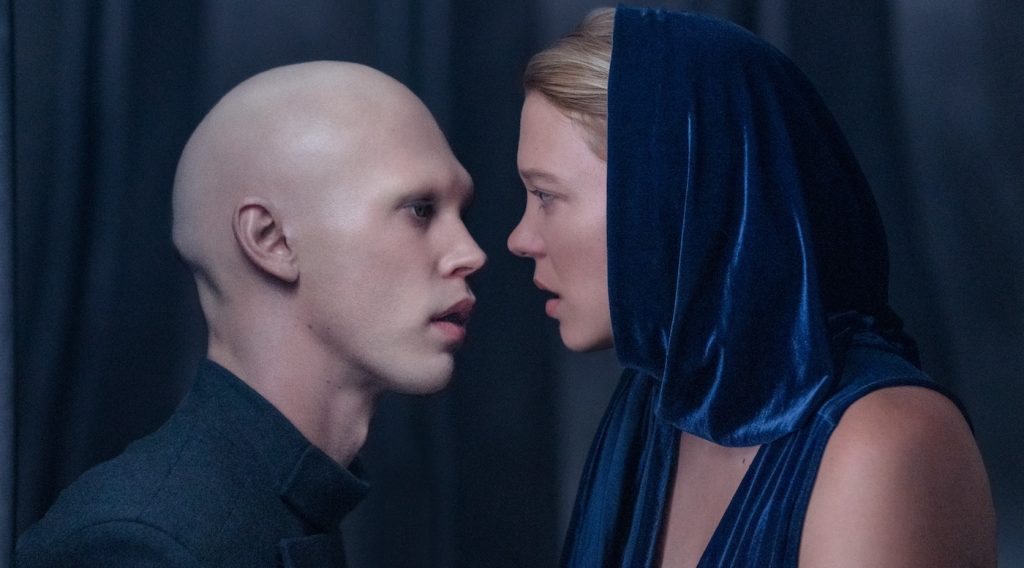
This entire sequence lasts no more than a minute or two, yet it sticks in the mind, one of many such visual mind-worms, if you will, that Fraser, Villeneuve, and the rest of the Dune: Part Two creative team seeded in their stunning film. So, how did Fraser pull off that particular visual coup?
“Well, if I tell you that, I have to murder you,” he laughs, then pauses for effect. “This is where it’s extraordinary to work with a visionary director. His brief to me was that Feyd is walking down this hallway after a celebration of him, but instead of fireworks, they should be anti-fireworks, the opposite of fireworks, which is a real head-scratcher technically.”
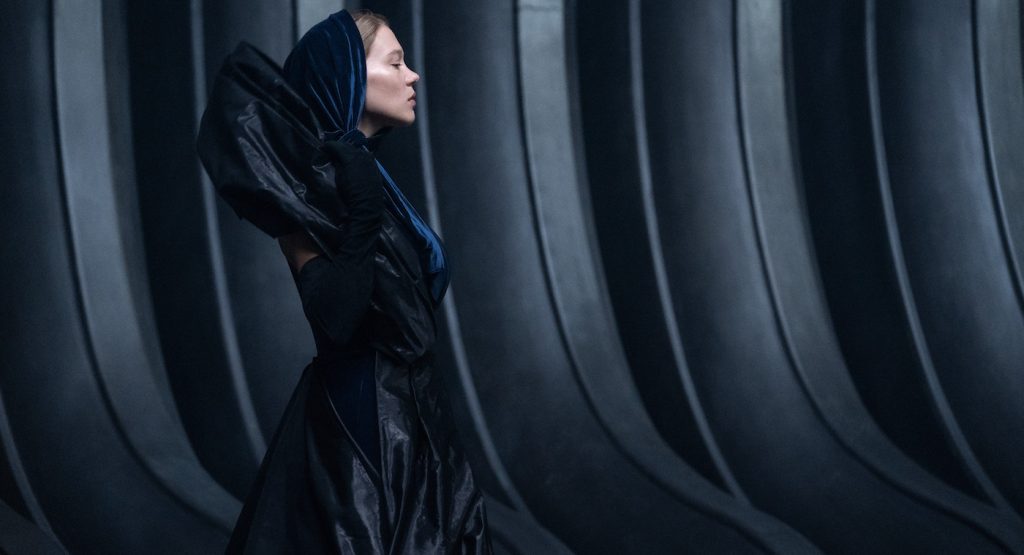
Fraser loved the concept but was initially at a loss on how to go about achieving it. Yet the Oscar-winning cinematographer (for Dune: Part One) has years of experience testing new techniques and arriving at novel approaches, from his work in Kathryn Bigelow’s Zero Dark Thirty to Gareth Edwards’ Rogue One: A Star Wars Story to Matt Reeves’ The Batman. He was part of the team that deployed cutting-edge technology to Disney+’s The Mandalorian. For the anti-fireworks, he relied on new technology and the clever idea of his fellow Oscar-winner from Dune: Part One, production designer Patrice Vermette.
“We’re very fortunate technologically that we can run video through lights,” Fraser explained. “So I was running video through those lights of arc welders, inverted fireworks, and jellyfish. That was an idea Patrice had, to run some video of jellyfish, and while you don’t see them on the screen, the fireworks are inspired by these video files running through the lights.”
Dune: Part Two picks up where the first installment ended, with Paul Atreides and his mother, the increasingly powerful Bene Gessiret member Lady Jessica (Rebecca Ferguson), relying on the help of the Fremen, the native inhabitants of Arrakis. This came after House Atreides was decapitated by the Harkonnens in a sneak attack that capped Part One, killing Duke Leto Atreides (Oscar Isaac) and leaving Paul fatherless, Lady Jessica a widow, and the scattered remnants of House Atreides leaderless. The sequel—properly considered a continuation by Villeneuve and his team—picks up with Paul and Lady Jessica under the protection of the Fremen in their Arrakis stronghold of Sietch Tabr, a system of caves and tunnels buried beneath the harsh glare of Canopus, the star that blazes above the desert planet.
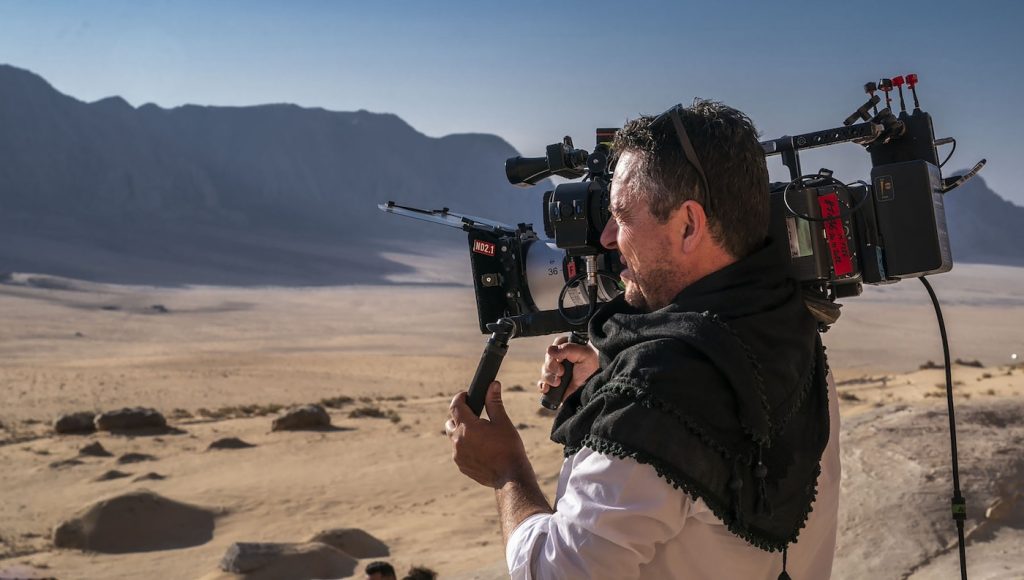
Photo by Niko Tavernise
While Paul contends with his feelings for Chani (Zendaya), a Fremen with ferocious fighting ability and little use for prophecy, his bleak visions of his own ascendance and the numberless deaths it will bring, and his own mother’s schemes to bring this all to pass, trouble continues to brew on Giedi Prime. The aforementioned victory achieved by the psychopath Feyd-Rautha in a gladiator battle with some conveniently maimed Atreides captives is another of the movie’s masterpiece spectacles. Giedi Prime is shot in such a way that you begin to understand why the Harkonnens are hairless and pale, given that the light on their planet, such as it is, looks as if it’s a poison rather than a source of warmth and growth. Achieving this bloodless look was another feat of technological mastery and artistic courage.
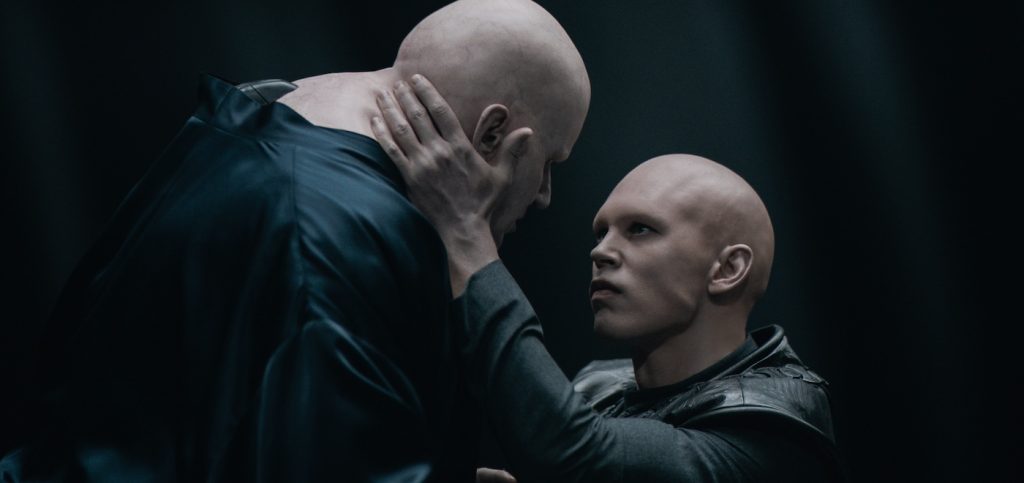
“There’s an element of my job that’s technical, and there’s an element of my job that’s very arty,” Fraser says. “So there are those two aspects of my brain, which is why I think I enjoy the job so much—I can get into the techie stuff, but I can also apply that in an artistic way. For years, I’ve been experimenting with using infrared light to film things. This goes back to the days of Zero Dark Thirty, where I used infrared to light some of the raid scenes, but that was a night vision camera, not an infrared camera. I started experimenting with what infrared light could do.”
Fraser explained that the concept of infrared cameras is not only not new, but it’s something people see all the time. It’s what you’re looking at when you check your Nest camera or see any grainy security footage at night.
“That’s the ghoulish look that comes from cameras at night, and I’ve always loved that look,” Fraser says. “So when Denis and I talked about the light in Giedi Prime being different and colorless, I told him that I thought I had the right technique for this, and I presented it to him, and he loved it. It’s otherworldly, yet we recognize it, but we’re not sure why.”
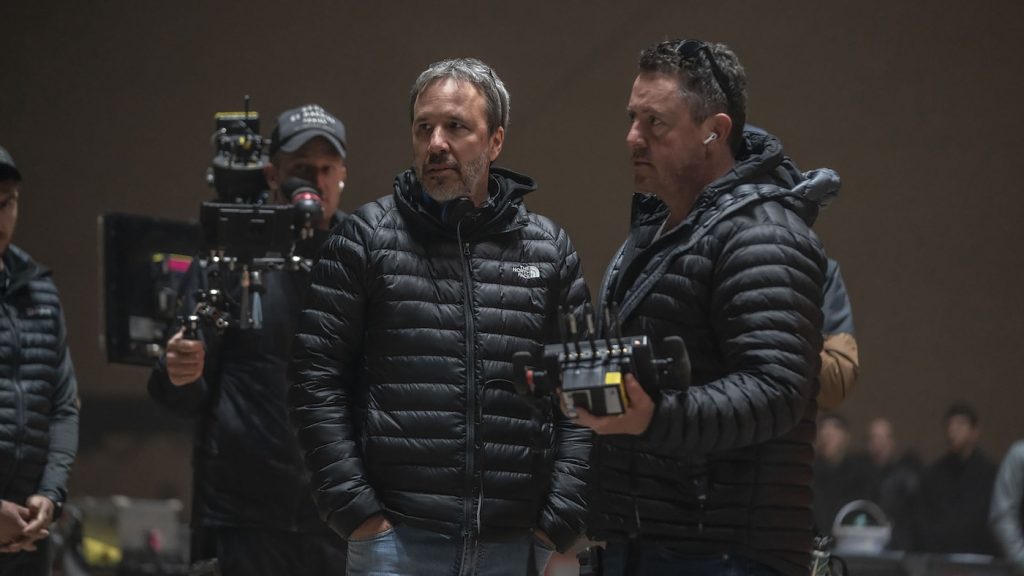
The system Fraser devised to create the unsettling look on Giedi Prime was a lot more complicated than merely using infrared cameras, of course. He had the advantage of being able to work with performer Roger Yaun, who plays one of the captive Atredies soldiers, Lieutenant Lanville. As a special “gift” for Feyd-Rautha, his grotesque uncle, Baron Vladimir Harkonnen (Stellan Skarsgård), the main villain of Part One, unleashed an only moderately injured Lieutenant Lanville on his nephew Feyd. The wounded Atreides soldier proved a capable, if overmatched, combatant. Yaun turned out to be the ideal performer for Fraser to test his lighting method.
“I did a couple of different demonstrations. Thankfully, we had access to Roger Yuan, who was one of the actors in that gladiator scene. He has a really nice shiny head, so he was a good stand-in for what skin would look like when shot like this,” Fraser says. “So I did a test out in the sun, and I did a test in the shade, and I did another test inside the studio that was lit with only infrared light, so it was in the dark. I knew that would be impossible to shoot for real, but we went out and bought 20 security lights and did that test inside. The benefit was that pupils dilate in the dark; they become massive, but the camera can see them. But it would be really hard to stage a scene in the dark, and we preferred the outside look after that series of tests. What’s great about Denis is when he loves something, you know about it. He’s not shy about expressing his love, so when he first saw that test, I can’t repeat the expletives that came out of his mouth.”
The entire gladiator sequence on Giedi Prime is a stark reminder of what kind of enemies Paul, Lady Jessica, and the entire population of the Fremen have in the Harkonnens. It’s also a stunning example of the craftsmanship of dozens, even hundreds of people, coming together to make a single moment sing. That pale, murderous light, the triangle-shaped Colosseum, the crowd shouting Feyd’s name, the performers, led by Butler himself, drawing ever closer to the requisite violence.
“I’ve expressed my adoration for our amazing production designer [Patrice Vermette], and I will continue to do it,” Fraser says. “The design of Giedi Prime, the design of the entire movie, is extraordinary. But I particularly love that coliseum.”
Check back tomorrow for part two of our conversation with Greig Fraser.
For more on Dune: Part Two, check out these stories:
“Dune: Part Two” Costume Designer Jacqueline West on Creating a Goth Rock God in Feyd-Rautha
Unveiling the Bene Gesserit’s Secrets With “Dune: Part Two 2” Costume Designer Jacqueline West
Architect of Arrakis: “Dune: Part Two” Editor Joe Walker on Forging a Ferocious Masterpiece
Featured image: Caption: AUSTIN BUTLER as Feyd-Rautha Harkonnen in Warner Bros. Pictures and Legendary Pictures’ action adventure “DUNE: PART TWO,” a Warner Bros. Pictures release. Photo Credit: Courtesy Warner Bros. Pictures



